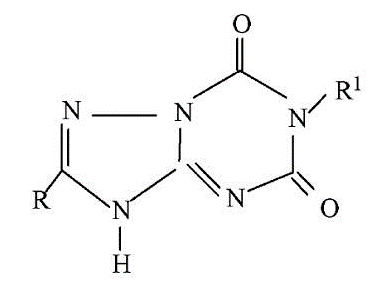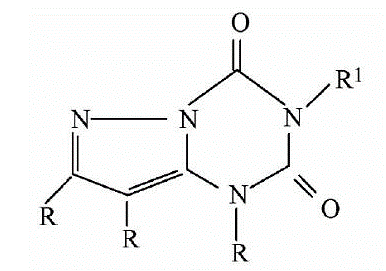- Home
- About Us
- Professionals
- Professionals
- Professionals

- Services
- Services
- Practice Areas
- Information Security

- News
- Database
- Database
- References
- Foundin Cases
- Related Websites

- Contact
Revised Chinese Patent Examination Guidelines Took Effect from 15 January, 2021 (PART II)
Written by Xiao HAN (Nicole)
The China National Intellectual Property Administration (“CNIPA”) recently announced the "Revised Patent Examination Guidelines", which came into force on January 15, 2021. This is a major development in the field of IP industry in China. Although the “Revised Guideline" is not a formal source of law, it can be used as a reference in courts’ decisions provided that there are no conflicts with the "Chinese Patent Law" and its implementation rules. Therefore, its amendment is of great significance to the administrative and judicial procedures on patent-related matters.
In this article, we just focus on the amendments regarding novelty of compounds, inventive steps of compounds, deposition, monoclonal antibodies, and inventive steps in biotechnology.
Novelty of Compounds
The “Revised Guidelines" states: “where a patent application claims a compound, if the chemical name, molecular formula (or structural formula) and other structural information of the compound is recorded in a reference so that those skilled in the art believe that the claimed compound has been disclosed, the compound is not novel, unless the applicant can provide evidence to prove that the compound cannot be obtained before the filing date.” In other words, even if the reference has disclosed the same physical and chemical parameters as the claimed compound, it cannot be directly inferred that the compound is not novel.
In addition, according to the "Revised Guidelines", when the structural similarities and differences between the claimed compounds and reference cannot be determined, physical and chemical parameters, preparation and experimental effects, and other factors should be combined and considered to determine whether the compounds can be predicted as substantially the same by the skilled in the art. On the contrary, the applicant can prove the novelty of the compound by proving the structural difference between the claimed compound and the reference.
Inventive Steps of Compounds
The "Revised Guidelines" has made major changes to the examination of inventive steps of compounds, that is, regardless of whether the compound is similar in structure to the existing compound, a unified "problem-solution-approach" is used to determine whether a compound is inventive.
The "Revised Guidelines" provides the following examples under this topic:
[Example 1]
Prior art:
 (Ia)
(Ia)
Application:
 (Ib)
(Ib)
(Ib) and (Ia) have different core structures, but they have the same use. Those skilled in the art generally believe that compounds with similar structures have the same or similar uses, and similar structures generally mean that the compounds have the same basic core part or basic ring. In the prior art, there is no technical inspiration about modifying the basic ring of (Ia) to obtain (Ib) while maintaining the same use, therefore, (Ib) meets the requirement of inventive steps.
[Example 2]
Prior art: H2N-C6H4-SO2NHR1 (IIa)
Application: H2N-C6H4-SO2-NHCONHR1 (IIb)
(IIb) is obtained by inserting -CONH- into the structural fragment NHR1 of (IIa). (IIa) and (IIb) have different uses as (IIa) is a sulfa antibiotic while (IIb) is sulfonyl acyl urea and an anti-diabetic drug. Those skilled in the art have no motivation to modify R1 in the sulfa antibiotic into CONHR1 to obtain the anti-diabetic drugs. Therefore, (Ib) meets the requirement of inventive steps.
Deposition
Guangdong Culture Collection Center (GDMCC) located in Guangzhou is added.
Monoclonal Antibodies
Regarding the drafting of monoclonal antibody claims, the "Revised Guidelines" adds a limitation method of “limiting by structural features”.
It is stipulated in the current Guidelines that monoclonal antibody claims can be defined by the hybridoma from which it is produced. However, with the maturity and popularization of monoclonal antibody sequencing technology, it has become easier to obtain structural information of monoclonal antibodies and it is possible to define monoclonal antibodies by structural features.
The "Revised Guidelines" provides the following examples under this topic:
[Example]
1. A monoclonal antibody of antigen A, comprising VHCDR1, VHCDR2, and VHCDR3 shown in amino acid sequences of SEQ ID NOs. 1-3, and VLCDR1 VHCDR2, and VHCDR3 shown in amino acid sequences of SEQ ID NOs. 4-6.
2. A monoclonal antibody of antigen A produced by hybridoma of CGMCC Deposition No: XXXX.
Inventive Steps in Biotechnology
Regarding the inventive steps of biotechnology, the "Revised Guidelines" discarded the over-absolute requirement of "unexpected technical effect" and returned to the "problem-solution-approach" for examination. In addition, the "Revised Guideline" also enriched subject matters and added new forms of biotechnology such as "peptides or proteins".

 adm
adm

